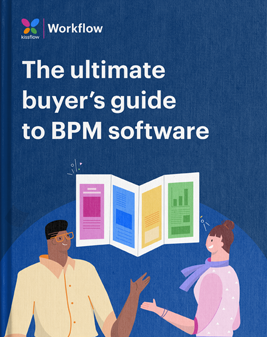For most organizations, achieving successful digital transformation is not an overnight process. Rather, it’s a long drawn journey. However, there are some useful technologies that you can leverage to accelerate the entire process.
Business Process Management (BPM) technologies have been an integral part of digital transformation strategies for many years. As companies are always looking for newer technologies to optimize their business processes, robotic process automation (RPA) has been gaining popularity as the latest automation technology. But how different is it from BPM?
While both RPA and BPM are distinct in their own ways, they also complement each other and can help you implement company-wide digital transformation seamlessly.

What Is Robotic Process Automation (RPA)
RPA helps automate monotonous, routine, and time-consuming tasks, and in turn, allows your team to focus on more important and complex business tasks. It is application agnostic and is based on low-level events or triggers like keyboard or mouse use and web page scraping.
However, RPA is more of a surface-level fix and it doesn’t aim at optimizing processes. Instead, its goal is to try and make processes work faster by replacing manual human efforts.
What Is Business Process Management (BPM)
BPM focuses on streamlining and reengineering underlying business processes to drive higher efficiency. It can improve business processes by analyzing how they work in different scenarios, making improvements to them, monitoring the modified processes, and continually optimizing them.
It’s important to note that BPM is neither a task management tool nor a project management tool. Like RPA, it focuses on optimizing ongoing and repetitive processes that follow a predictable pattern.
Though, the two technologies have many stark differences.
RPA Vs BPM - The Difference :
| RPA | BPM | |
|---|---|---|
| Technology | Configures bots to complete monotonous and time-consuming tasks in order to save time and allow employees to focus on more complex and high-priority tasks. | Identifies and streamlines business process to remove bottlenecks and obtain shorter cycles |
| Primary Focus | Minimizing the number of manual, repetitive, and rule-based tasks that don’t need any complex decision making | Re-engineering and modifying business process to improve enterprise-wide efficiency and productivity |
| Deployment effort | Low efforts required as RPA tools can seamlessly work across your organization’s existing applications and processes | Comparatively high efforts as BPM involves reshaping business processes in your organization |
| Business impact | Returns are quick and immediate. Though RPA implementations may not always address the underlying inefficiencies in your business processes | Offers high and long-term returns as implementing BPM leads to higher efficiency, cost reduction, agility, productivity, and compliance |

#Free eBook
The Ultimate Buyers guide to BPM Software
Thank you for Showing Interest
Our Team will contact you soon
How Are BPM and RPA Used?
RPA is mostly used by organizations when they have a large amount of data living across legacy systems. When processes with a lot of data are automated, you are instantly able to see direct business impact on cost savings, efficiency, and risks. Though, RPA can still only be used for routine tasks that do not involve any complex reasoning or decision making.
As compared to RPA, BPM is used to automate complete end-to-end processes. It can do that by:
- Identifying all the administrative duties required for the process
- Outlining the complete workflows
- Analyzing areas where the workflows can be optimized
- Modifying workflows to make them more effective
As compared to RPA, which can only automate one process at a time, BPM can help streamline complete workflows and multiple processes to reduce chances of manual errors and improve overall efficiency.
RPA vs BPM - How to Choose the Right One?
Getting a clear understanding of both RPA and BPM can definitely help you decide the right technology for your automation project.
You should choose RPA when you need to automate processes that are not going to frequently change and wouldn’t require any integration. BPM should be used for processes that are majorly executed by humans or require third-party integration.
When deployed together, RPA and BPM can help you build a powerful platform that can support digital transformation throughout your organization. For instance, when you are using BPM to automate an entire business process, you can use RPA for one or two steps of the process that are rule-based.
But, if you could only pick one over the other, then BPM would be an obvious choice since it is a much more powerful technology that can guide your organization towards successful digital transformation.
Kissflow Process is a BPM platform that can help automate business processes by allowing you to develop and deploy applications without any coding. Try it today for free to see all the advantages of BPM.
⋙ Check out why these 6 BPM Software are at the top of the competition!
Related Resources: